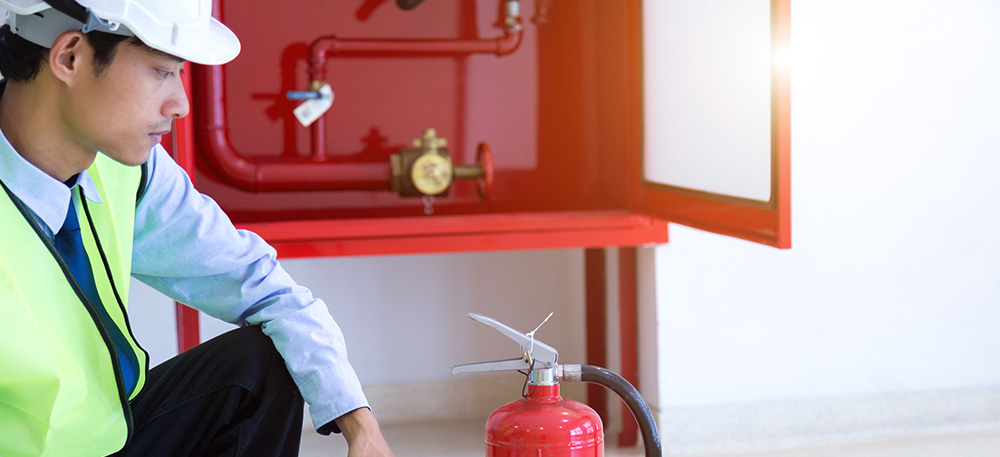Did you know that incorrect use of appliances, devices and products is the number one cause of fire in businesses? Short circuit and arson complete the top three. A company fire: it just doesn’t bear thinking about. Or rather, it does. Because a fire-safe work environment eliminates a lot of risks.
An accounting firm is not a timber processing company, although there are fire risks in every workplace. Keeping these risks contained starts with a risk analysis of your organisation and workstations. How big are your premises? What activities take place on these premises? How many employees are there every day? How likely is a fire? The risk analysis identifies the conditions that could cause a fire, as well as the possible consequences.
In your company, do you work on or near electrical installations? If yes, a detailed risk analysis of this/these installation(s) are vital to detect any safety risks. This course (In Dutch or in French) points you in the right direction to take a structured approach to such an analysis.
The prevention advisor is typically the person who prepares a risk analysis. Every organisation employing staff is obliged to appoint one or more prevention advisors. Their level of training – 1, 2 or 3 – depends on the size of your business and the specific risks your employees are exposed to.

First of all, there are a number of essential general measures. For example, you must have sufficient emergency exits, as well as safety lighting and fire extinguishers. Another absolute must is clear signage with pictograms. Furthermore, a general smoking ban and procedures for working with open flames help to avoid hazardous situations, as does general tidiness of the workstations.
Specific measures related to fire and explosion hazards are needed if you work with hazardous products or equipment, or in confined spaces. For example, anyone working on or near an electrical installation must we aware that a flame may be created when switching on or in the event of short circuit. As such, a certificate of competence for ‘instructed person’ (BA4) or ‘competent person ’ (BA5) is mandatory. However, it goes without saying that fire-safe behaviour is crucial for every employee, so the message is to continue investing in awareness.
For many companies, work alternates between the office and home. But there are fire hazards at home too. This course offers plenty of prevention tips for a safe home office.
First and foremost, ensure that every employee is aware of the emergency and evacuation procedure and organise regular drills. What’s more, every company must have a fire service, ideally made up of various employees from across the organisation. This is to make sure there is always someone present who can coordinate in the event of a fire.
The best possible preparation for your fire service is targeted training. The combined First Aid and firefighting course may appeal to smaller organisations, as both responsibilities are often closely linked here.

The fire prevention risk analysis, your internal emergency plan, evacuation plans, evacuation drill reports, fire protective equipment, the dates and records of inspections and maintenance, etc.: consolidating all your measures brings clarity. Clarity for your prevention advisor, but also for the emergency services, if it ever came to that.
Cookies saved